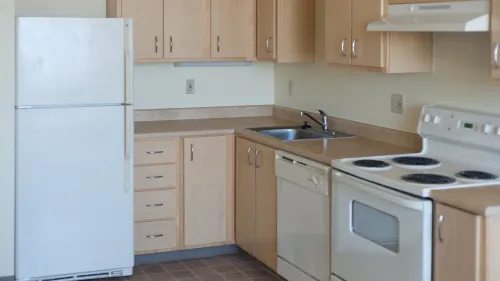Housing Priorities for Newcomers to the United States

Photo Credit: International Rescue Committee
The United States is in a housing crisis, with not enough affordable homes for everyone who needs them. Here is a guide to help you search for housing that fits your needs and budget.
Housing Size
The number of bedrooms will be listed in the description of a housing advertisement. In the United States, it is common for two people in a family to share a bedroom. Young children can share a bedroom, but it may not be appropriate for adolescents of different genders to share one bedroom. It is also important to know that local governments regulate the number of people who are allowed by law to live in a particular housing unit, based on the number of bedrooms. The maximum number of people allowed in one housing unit will also most likely be written in the lease.
Calculate the minimum number of bedrooms your family will need before you start your housing search. For example, if your family consists of a married couple, two adolescents of different genders, and two small children, you might search for housing with four bedrooms. If you are a married couple with two small children, you would be searching for two-bedroom housing. If you are a married couple with no children, you would be searching for either a one-bedroom or a studio housing. (Studio housing consists of a single room with a kitchen and a sleeping area.)
Accessibility Requirements
Your housing search should consider any accessibility requirements for a disabled family member. For instance, a family member in a wheelchair would need housing that could accommodate wheelchairs. Families with a blind member may need housing appropriate for the sight-impaired. Families with very young children may require housing with an elevator. These features may be listed in the housing advertisement when searching for housing. If they are not listed, you can inquire with the real estate agent, the property manager or the property owner.
Location
Most newcomers to the United States will not have a vehicle or a driver’s license. If there is no access to a car, the housing search should consider locations that are near public transportation or are considered “walkable” or “bikeable” for access to work, food stores, schools, laundry facilities, medical facilities, houses of worship, and other important locations. To find out if it would be realistic to live without a car at a specific address, neighborhood, city, or town, type in the location at the website Walk Score. It is also important that in the housing search, newcomers feel safe in a neighborhood where they are considering making their home.
Knowing what you require regarding housing size, accessibility requirements, and understanding facts about the neighborhood will help you narrow your housing search to what you can afford.

